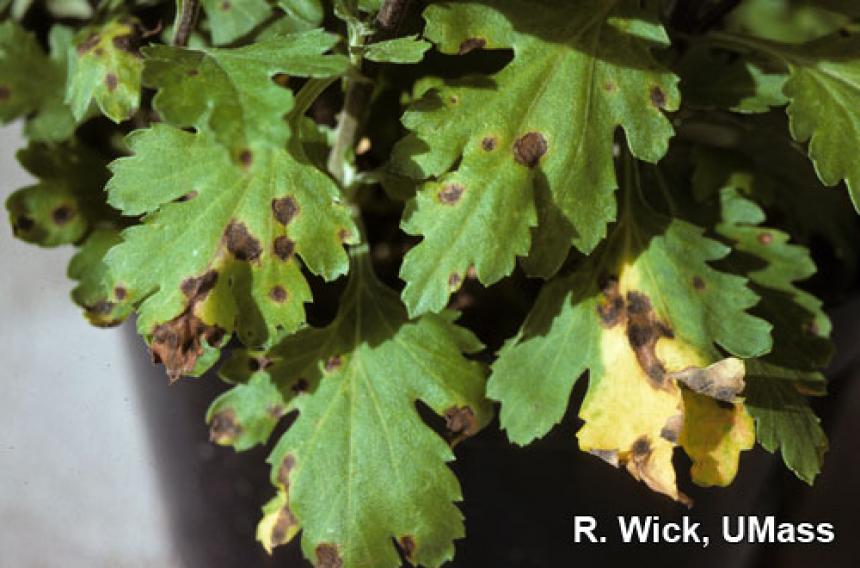Note that leaf lesions are light tan to gray and bordered by a purple margin. Examination with a hand lens may reveal small, black specks that are fruiting bodies of the fungus.
Septoria blight is caused by species of Septoria. This disease is most severe where wet, humid weather persists for extended periods. Cultural control measures include rotation to non-susceptible crops for two years, control of susceptible weeds,and removal of crop debris from the planting area. Remove and destroy badly infected plants. Careful attention to the timing of irrigation (avoid late afternoon or evening) and proper plant spacing to reduce the amount of time during which the plants remain wet can reduce disease spread. Treat with protective fungicides at regular intervals. Among the compounds registered for use on ornamentals are chlorothalonil, thiophanate methyl, copper compounds,and mancozeb. The effectiveness and number of sprays required will vary with weather conditions.
Fact Sheet: Leaf Spot Diseases of Ornamentals
